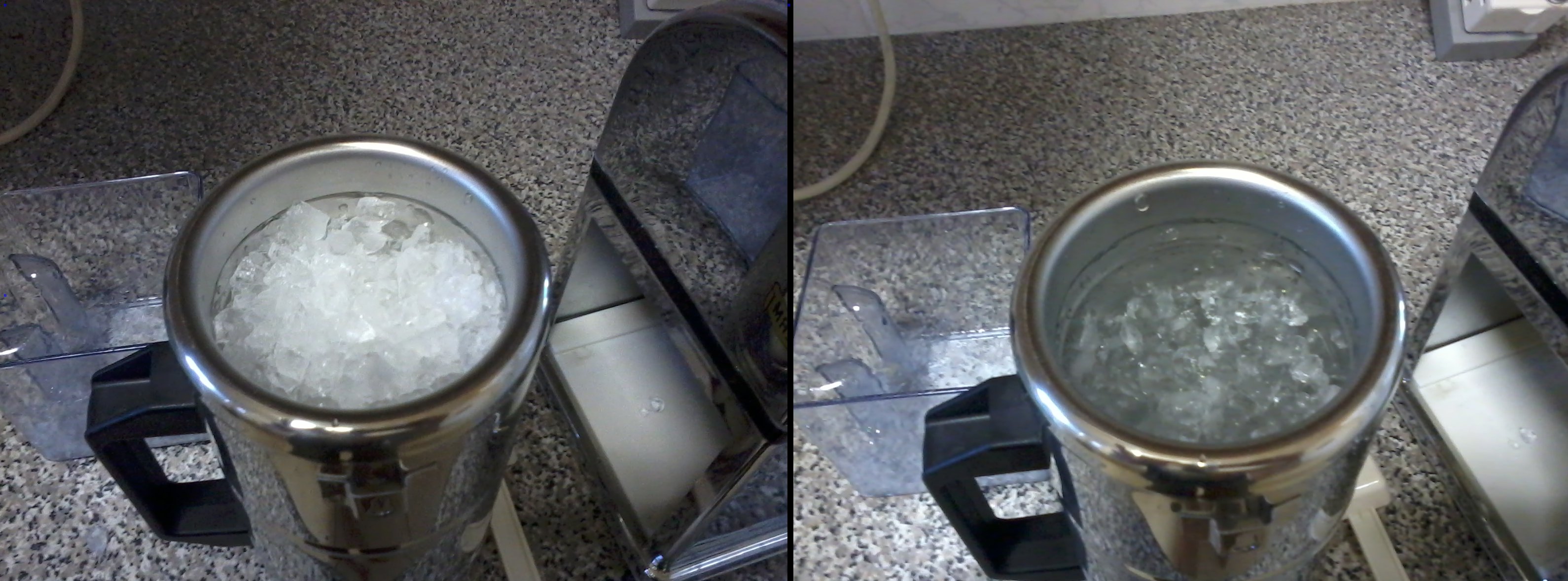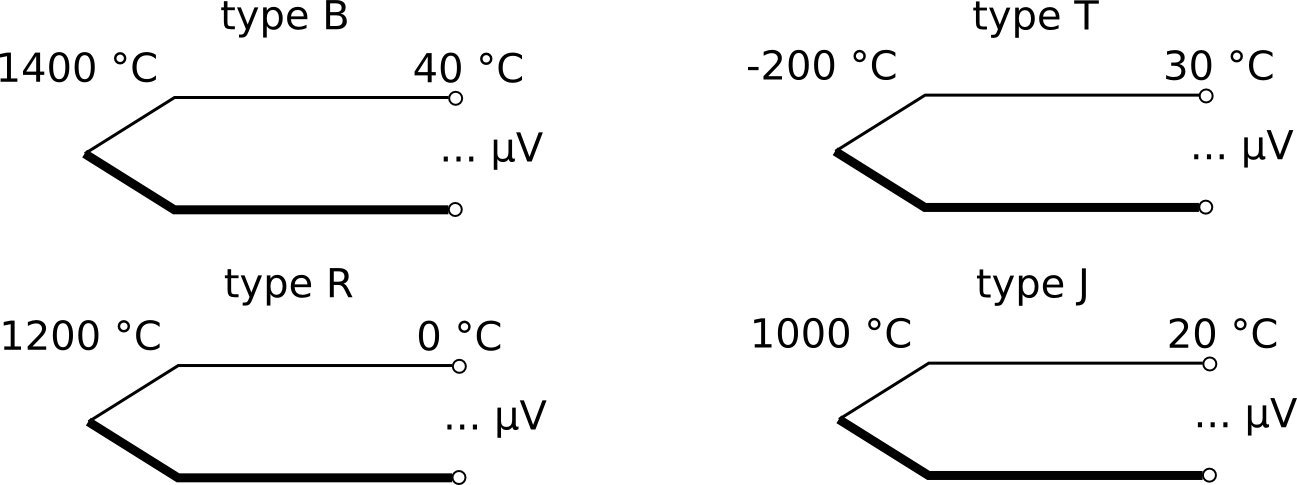Reflective foil laminates are used in thermal insulation of buildings. A standard test method [SANS 1381-4] describes the measurement (amongst other properties) of their emissivity using a thermopile radiation thermometer. This article describes how to estimate the uncertainty of measurement (UoM) in this application of infrared radiation thermometry.
The documentary standard SANS 1381-4 requires that the emissivity of one reflective surface of the specimen being tested be less than or equal to 0.05, or 5% (clause 4.8).
To measure the emissivity (clause 5.8), half of the specimen’s surface is painted black, the specimen is heated to 70 °C (presumably, this temperature is chosen to represent a typical situation in use, in a ceiling or around a hot water geyser), and the total amounts of thermal radiation coming from the reflective part and from the blackened part are measured by a calibrated thermopile (clause 5.8.1.2). The emissivity of the blackened part, , is assumed to be 0.95, or 95% (clause 5.8.1.3). The thermopile output signals when viewing the reflective part,
, and the blackened part,
, are used to calculate the emissivity of the reflective part,
, as follows:
, or
(clause 5.8.4).
To understand the relationship between thermopile output, target emissivity and temperature, let’s analyse the heat transfer to and from the detector surface (thermopile hot junction):
Let the target (foil) temperature be (70 °C, in this case), ambient temperature be
(probably 23 °C), thermopile hot junction temperature be
and thermopile cold junction temperature be
.
The voltage output of the thermopile, , is proportional to the difference between hot and cold junction temperatures, that is,
.
We express the total amounts of thermal radiation using the Stefan-Boltzmann law. The nett thermal radiation entering the detector is the sum of that emitted by the target to the thermopile hot junction, , plus that reflected by the target from the surroundings to the hot junction,
, minus that emitted from the hot junction,
.
Heat transferred by convection from the thermopile hot junction to the adjacent air is , where
is the convection heat transfer coefficient and
is the surface area of the hot junction or detector.
This is all the heat transferred from the outside world to the detector surface (hot junction). At equilibrium, it is balanced by heat transferred from the hot junction towards the cold junction (within the body of the detector) by conduction. This heat flow causes a temperature gradient between hot and cold junctions, with the thermal conductivity of the detector body, , relating the temperature difference to the amount of heat flowing:
, where
is the distance between hot and cold junctions.
At equilibrium, the heat transferred to the detector surface by radiation and convection should be equal to that lost to the cold junction side by conduction: .
Rearranging the above equation, .
Let us assume that the thermopile backside has an efficient heatsink, so that . (Deviations from ideal behaviour, for example, due to changes in the thermopile cold junction temperature with increasing incident radiation, should be evident from the thermopile’s calibration results.) Then, the equation becomes
.
At this point, I get stuck: I would hope to reduce this to or, equivalently,
, so that thermopile output
is proportional to
.
Returning to the simple equation used in SANS 1381-4, let’s identify the sources of uncertainty:
The dependence of the thermopile output on target temperature
and ambient temperature
is shown on the right-hand side of the equation derived above. As
and
are functions of
and
, any variation in these temperatures will cause variation in the signals
and
. The ratio
does not depend on the values of
and
, as these terms are the same in numerator and denominator and cancel out, but only on their stability during the time required to measure
and
. For this reason, we do not explicitly include uncertainties in these temperatures, but rely on them being captured in the standard deviations of
and
.
The uncertainty in thermopile output signals introduced by the digital multimeter (DMM) used to measure them is typically around of the measured signal (for a 6.5-digit DMM). This is negligible, compared to the repeatability components (experimental standard deviation of the mean, or ESDM) and uncertainty in the emissivity of the blackened part of the specimen. For this reason, we do not consider uncertainties arising from the DMM any further.
The distance between the thermopile detector and the target (reflective part or blackened part of the specimen) should not affect the results, provided that the target always fills the field-of-view of the detector. So, as long as the detector is close enough to the specimen, no uncertainty results from slight variation in this distance.
The standard deviations (ESDM, to be precise) of and
must be taken into account. As
is typically a very small value, its ESDM is particularly significant (see numerical example, below).
The relative uncertainty in is roughly estimated to be
. (In other words,
.) If this component appears to be significant in the following numerical example, we will try to estimate it more precisely.
Numerical example:
Measurements of : 1 μV, 8 μV, 0 μV, 11 μV, 6 μV and 9 μV. (Mean =
, standard deviation =
, ESDM =
, relative uncertainty
.)
Measurements of : 424 μV, 411 μV, 410 μV, 417 μV, 378 μV and 378 μV. (Mean =
, standard deviation =
, ESDM =
, relative uncertainty
.)
Result for emissivity: , or 1.4%.
As the relation between and
,
and
is one of simple multiplication and division, we can combine the relative uncertainties simply:
.
The effective degrees of freedom, , will be close to those of the dominant component,
:
, since
readings were taken. For
, the coverage factor for a level of confidence of 95.45% is 2.65. So, the expanded relative uncertainty is
, the expanded absolute uncertainty is
and the measurement result is
, or
.
Take care! When the quantity being measured (emissivity, in this case) is dimensionless and expressed in percent, and its relative uncertainty is expressed in percent, confusion can arise. The expanded relative uncertainty estimated above is 0.8, or 80%, of the measured value. It is not already an absolute uncertainty in emissivity, in other words, the result is not , which would be nonsensical.
We see that is the dominant component of uncertainty, by far. As
is unlikely to be significant compared to this, it is not necessary to estimate the latter component more precisely than the rough estimate we used earlier.
Note, regarding the simple combination of relative uncertainties performed above: This is only correct when the function is one of simple multiplication and division. For more general situations, the sensitivity coefficient must be determined by taking the partial derivative. The equivalence of these approaches for the simple equation is demonstrated below:
.
(Contact the author at lmc-solutions.co.za.)












